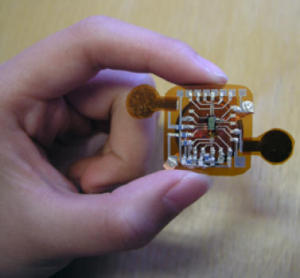Biosensor patch monitors brain, heart, muscle signals
April 22, 2013
The future of health care could be found in a tiny, paper-thin skin patch that collects vital information.
The Bio-patch sensor developed by KTH Royal Institute of Technology researchers is inexpensive, versatile, and comfortable to wear. It measures bioelectrical signals through the skin when applied to different parts of the body.
“On the chest it provides electrocardiography (ECG), on the skull it measures brainwaves (EEG), and on the forearm it can measure muscle response to stimulation from the nervous system (EMG),” says KTH researcher Geng Yang. It also has a built-in sensor that constantly monitors body temperature.
With a wireless connection, the patient can analyze the readings on their smartphone, or send the data via Internet to a healthcare professional for diagnosis.
“Bio-patch is a step towards self-care, which is valuable especially for patients discharged after an operation, or for the elderly living unassisted,” Yang says.
Yang says Bio-patch can also aid detection of brain disease by generating EMG data that helps physicians distinguish muscle changes from neurological problems.
A paper thin battery energy source in the Bio-patch helps make the patch comfortable and as small as possible, he says. “All electronic components are mounted on a flexible foil, which makes it easy to attach to the skin and to wear comfortably.” The patch can be discarded after use.
Yang says several companies have shown interest in the device.
